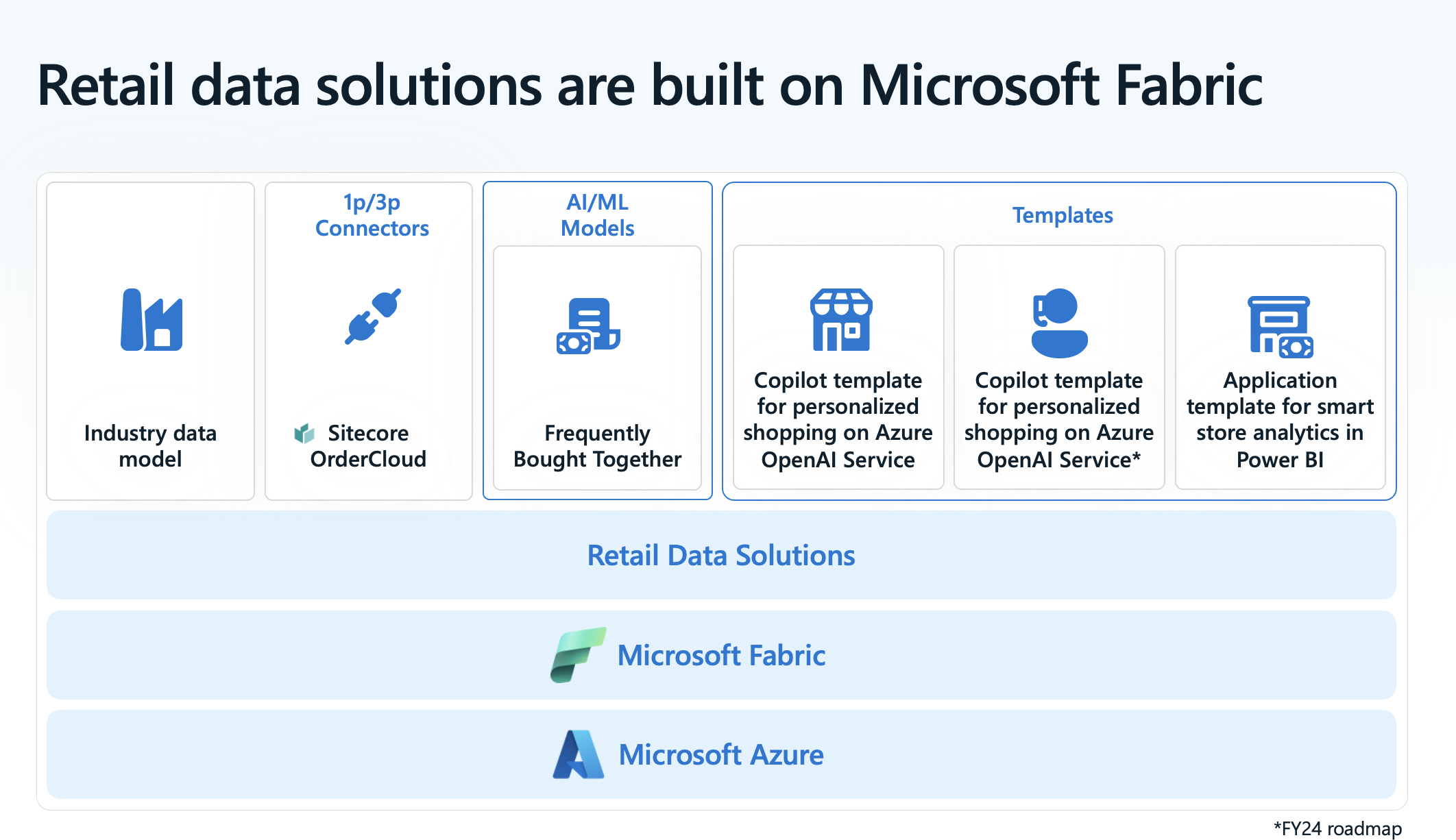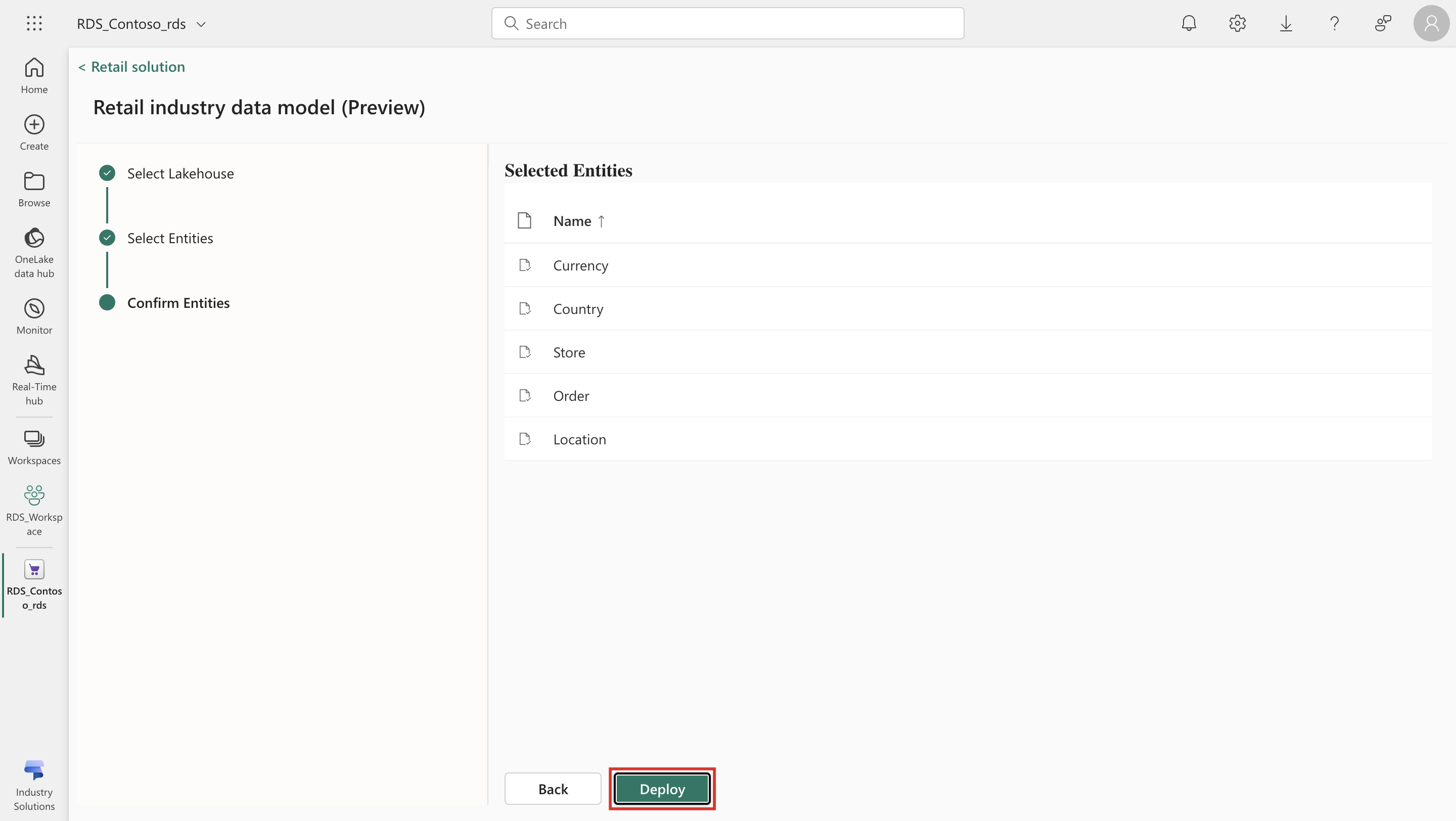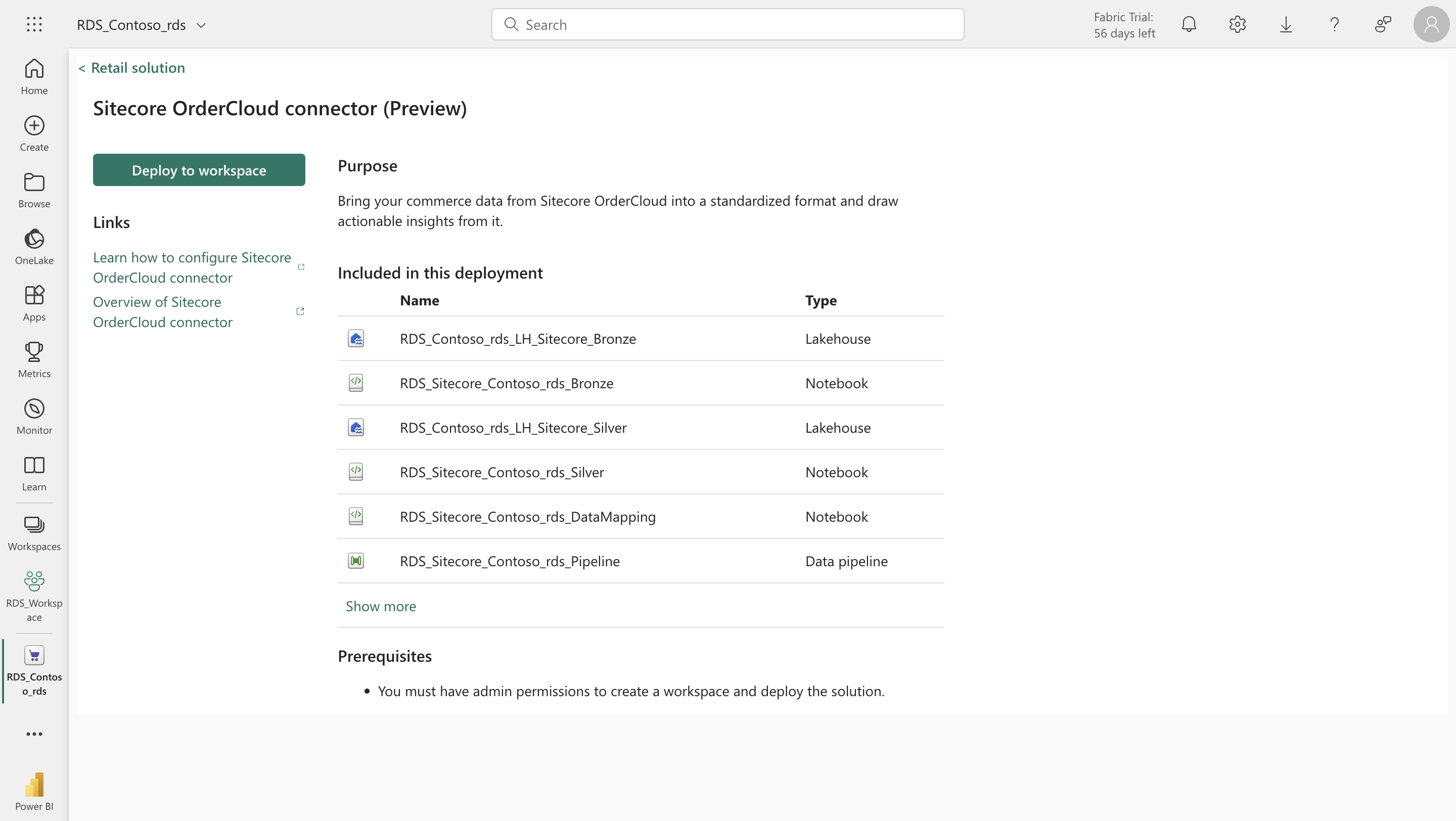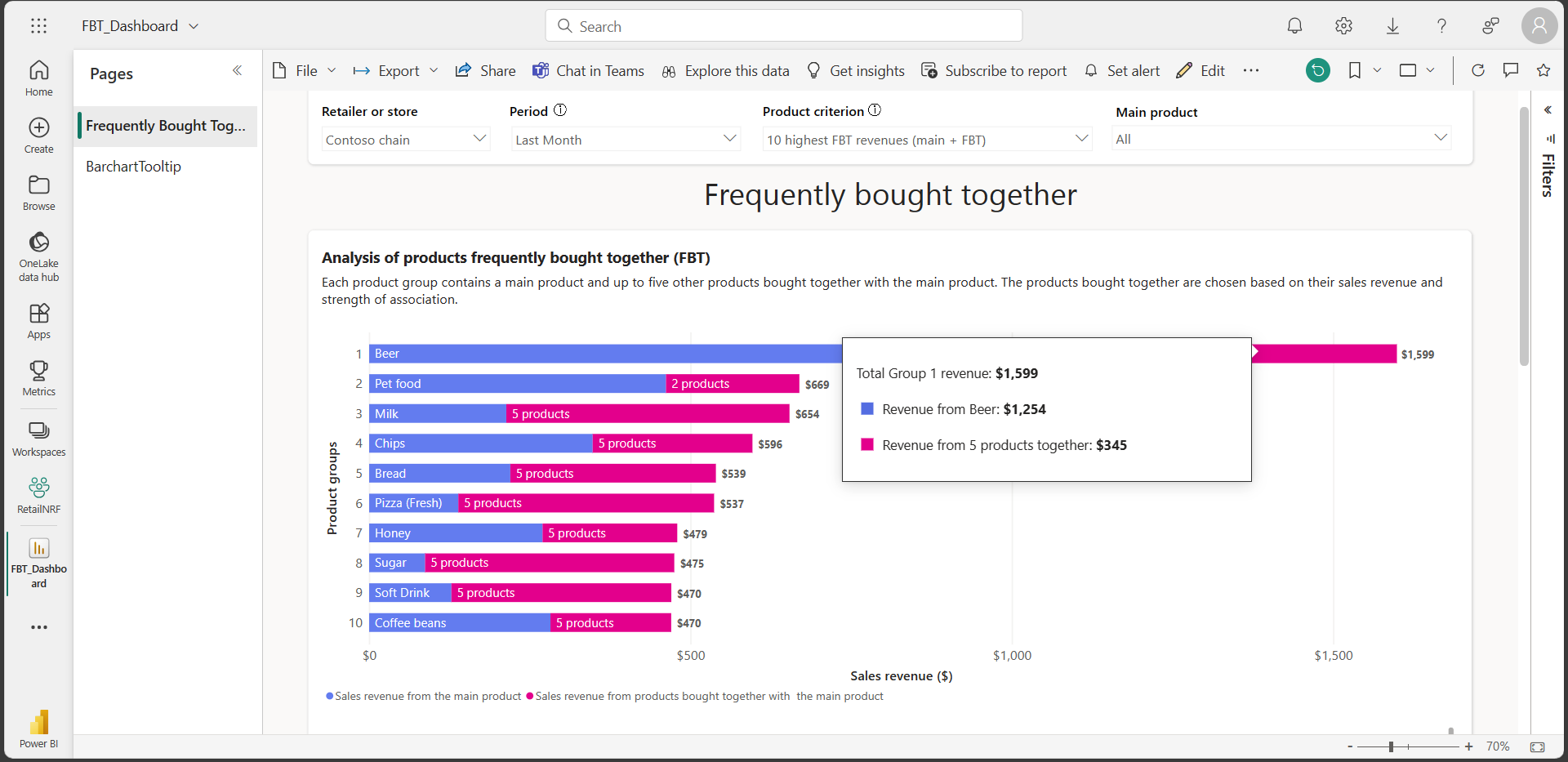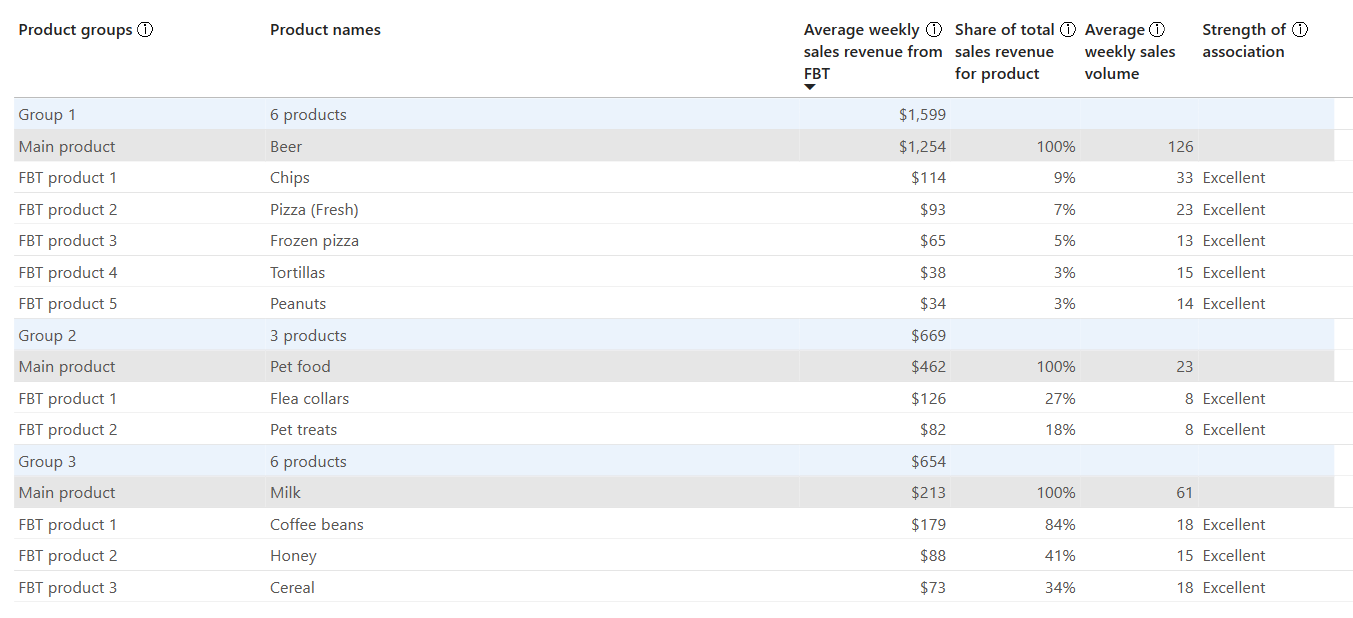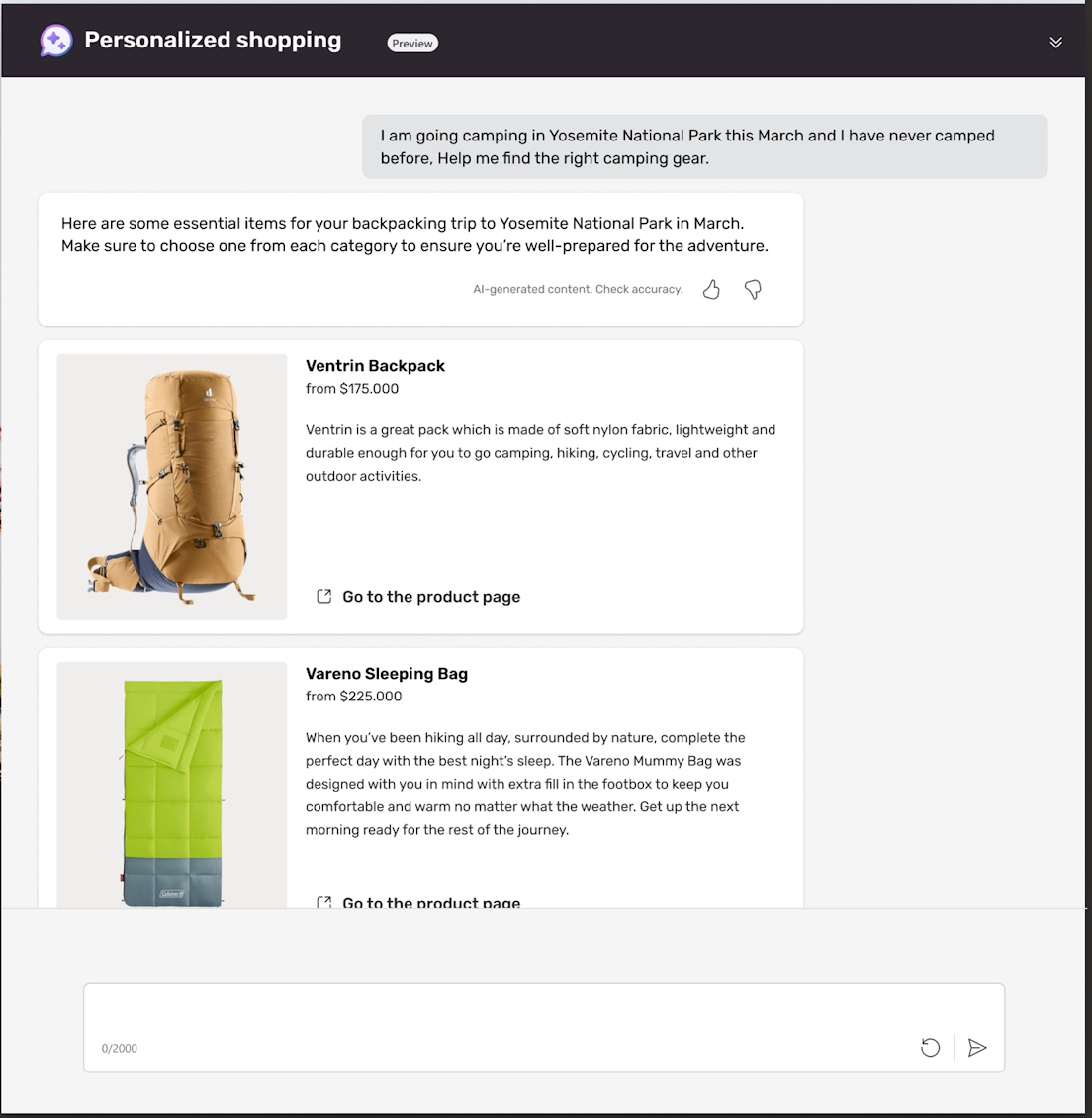Retail data solutions capabilities
Retail data solutions are built on Microsoft Fabric and Microsoft Azure. Retail data solutions, a specialized suite of capabilities on Microsoft Fabric, empower retailers to expedite the process of insight generation. This benefit is achieved by consolidating, enhancing, and modeling industry-specific data on Microsoft Fabric.
With Retail data solutions deployed in Microsoft Cloud for Retail, you can get, create, share, and visualize retail data with a data and analytics platform designed for AI.
Industry data model - A data model that allows retailers to plan, architect, and design data solutions. Retailers can use the retail industry data model for data governance, reporting, business intelligence, and advanced analytics.
Microsoft and partner connectors - Retailers can use the Sitecore OrderCloud data connector to bring e-commerce data from Sitecore OrderCloud (Preview) into Microsoft Fabric in real time. Under this unified lens, retailers can access insights and tools to proactively improve customer satisfaction and business operations at every touchpoint, from storefront to fulfillment.
AI/ML models - Provide actionable, data-driven recommendations to help retailers improve product upselling and shelf optimization. An example of this feature is Frequently bought together.
Application and copilot templates - Retailers can use custom, fine-tuned GPT models, which enable next-generation, unique shopper experiences with even greater personalization.
The following video describes how Retail data solutions can help retailers.
For more information, see Overview of Retail data solutions (Preview) in Microsoft Fabric.
Retail data solutions capabilities
The following are some of the key capabilities available in Retail data solutions:
Retail industry data model (preview)
The retail industry data model is a blueprint for retailers. It helps retailers structure their data in a way that helps them adapt to changing business needs. Retailers can adjust the retail industry data model to accommodate new data sources and business processes that are changing. Additionally, they can use the data model to adopt new technologies.
This capability allows retailers to store data into a standardized and harmonized structure, which reduces data inconsistencies, improves data quality, and drives valuable insights to actions. It also allows for simple activation of cross-application workflows. Retailers could use these insights across all retail business areas to drive efficiency, optimize operations, and improve customer satisfaction.
With the retail industry data model, retailers experience the following benefits:
Standardization - A consistent structure for storing and organizing retail data. This feature simplifies data management and analysis.
Efficiency - Simplify data input and minimize errors by providing preset fields and formats for retail data.
Data integrity - Apply data validation rules and quality checks to ensure accurate reporting and analysis.
Consolidation - Make data easier to work with by consolidating data from various sources, such as POS, e-commerce, and so on.
Analysis and reporting - Well-structured data leads to high-quality insights and timely decision making.
Data governance - Ensure compliance, security, and privacy for data visibility.
After you successfully bring data into the retail industry data model and add entities that are necessary for your business, you can generate insights by using Power BI. Additionally, you can enrich your data for market segmentation, profiling, trend analysis, and more.
For more information, see Retail industry data model.
Sitecore OrderCloud connector (preview)
The Sitecore OrderCloud connector provides a robust platform for accessing commerce data in three crucial areas: products, customers, and orders. It allows you to access all sellable products that are available, gain insights into consumers who are shopping from your e-commerce portals, and track sales orders that customers create.
The connector performs transformation and orchestration on top of the data from Sitecore OrderCloud to align with the Microsoft Retail industry standard schema.
The Sitecore OrderCloud connector helps you get access to solutions that are built on top of Retail data solutions. Currently, you get a Power BI report on top of Sitecore data. Each report provides a specific view of your data across sales, customers, and products that can help you make merchandising, marketing, and supply chain decisions.
For more information, see Sitecore OrderCloud connector.
Frequently bought together model (preview)
The AI/ML Frequently bought together model empowers the store or the merchandising manager with making data-driven decisions on product placement and promotions based on insights on closely related products. As a result, retailers can effectively promote cross-selling activity and boost joint sales.
The Frequently bought together solution is composed of a notebook, sample data, and a Power BI report. You should run the notebook first to create the output data that the UI uses later. The notebook uses the sample data by default, but you can point it to any other lakehouse with custom data points.
The Frequently bought together (FBT) analytics measures include:
FBT Revenue - Total sales of a main product and a portion of the top five FBT products’ sales when they're bought with the main product. It indicates the main product’s influence on total sales.
Share of Sales - The percentage of an FBT product’s sales resulting from being purchased with the main product. It shows the main product’s impact on an FBT product’s sales.
The Frequently bought together model provides a rich set of information and insights on its user interface (UI).
On the Frequently bought together table, you can view each element of the group of products: the main item, each Frequently bought together item, and the relevant data on the revenue and unit sold by each element of the group.
Retailers can use FBT analytics to:
Find the top revenue products and boost cross-sales by putting FBT products closer.
Check the lowest FBT revenue products and decide which ones to drop from their catalog.
Measure how past marketing actions, such as new shelf layout or promotion performance, affected the sales of each item in a product group. They would do so by comparing the before and after sales revenues when products were bought together.
For more information, see Frequently bought together model.
Personalized Shopping Agent on Azure OpenAI Service (preview)
Personalized Shopping Agent on Azure OpenAI Service is a language model-based assistant designed to revolutionize the retail experience. The template uses retail data from various sources. As a result, it empowers retailers to elevate customer interactions by providing tailored shopping recommendations based on individual needs.
Alongside the solutions that are included in the Retail data solutions, Personalized Shopping Agent is built on Microsoft Azure OpenAI Service and Microsoft Fabric as a standalone solution.
Personalized Shopping Agent on Azure OpenAI Service lets consumers shop through an AI-enabled chat experience. You can embed the template into your own shopping websites and apps, which further helps enrich customer interaction organically. It activates real-time, personalized offers and recommendations through an innovative conversational experience. The Personalized Shopping Agent further helps to convert this capability into an assisted sale closure in a seamless way.
The key aspects of Personalized Shopping Agent on Azure OpenAI Service are:
Use existing tech investments - The technology is built for e-commerce, and you can seamlessly reuse it in your conversational experience.
Improve customer experience - Consumers can shop online the same way they shop offline, in other words, by speaking with a trusted expert.
Deliver personalization - Consumers can interact with the Personalized Shopping Agent and they can seek real-time, personalized offers and recommendations through an innovative conversational experience.
Provide speed to value - Retailers can connect headless commerce engines into their existing technology infrastructure.
By harnessing data from the product catalog, pricing, and inventory availability, this innovative solution delivers timely and relevant suggestions to shoppers. With its responsible AI principles and focus on enhancing the shopper journey, it helps retailers unlock customized experiences, boost store associates' performance, and uncover valuable insights to drive growth and deliver value across their entire business.
For more information, see Overview of Personalized Shopping Agent.
